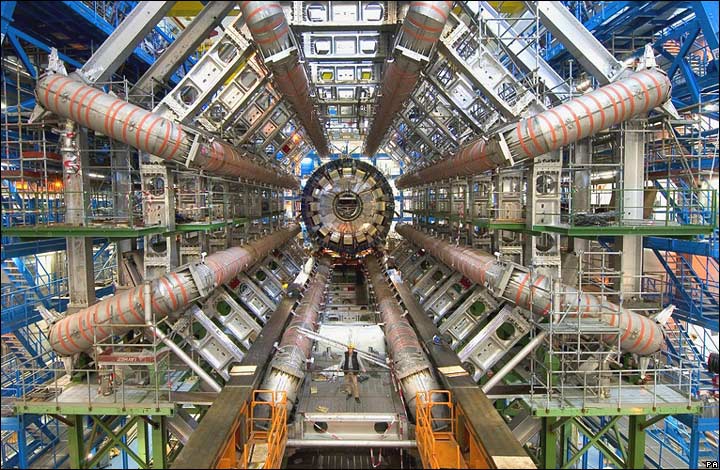This week saw the first beams of particles sent round the Large Hadron Collider at CERN, Geneva since it shut down in 2013. The restart follows a series of upgrades that will let the machine run at close to double its previous energy.
 Protons are already circulating the 27km long ring and the first collisions are expected in the next few weeks. The much higher energies being used this time will allow the exploration of many theories that have never before been tested. Scientists at CERN are hoping to discover some new Physics which goes beyond the Standard Model, the theory which features all the particles we have found so far but cannot explain all the phenomena we have seen. In particular, they will be searching for signs of supersymmetry, a theory that predicts heavy partner particles for everything in the Standard Model and could answer many unsolved problems. However no supersymmetric signals were seen in the first run so now the pressure is on for the two largest LHC experiments, ATLAS and CMS.
Protons are already circulating the 27km long ring and the first collisions are expected in the next few weeks. The much higher energies being used this time will allow the exploration of many theories that have never before been tested. Scientists at CERN are hoping to discover some new Physics which goes beyond the Standard Model, the theory which features all the particles we have found so far but cannot explain all the phenomena we have seen. In particular, they will be searching for signs of supersymmetry, a theory that predicts heavy partner particles for everything in the Standard Model and could answer many unsolved problems. However no supersymmetric signals were seen in the first run so now the pressure is on for the two largest LHC experiments, ATLAS and CMS.
An electrical fault led to around a week’s delay to the restart, but there have been no problems comparable to those faced in 2008 when escaping liquid helium led to an explosion that set the schedule back by 14 months.
“Operating accelerators for the benefit of the Physics community is what CERN’s here for,” said the Director-General of CERN, Rolf-Dieter Heuer. “CERN’s heart beats once more to the rhythm of the LHC.”